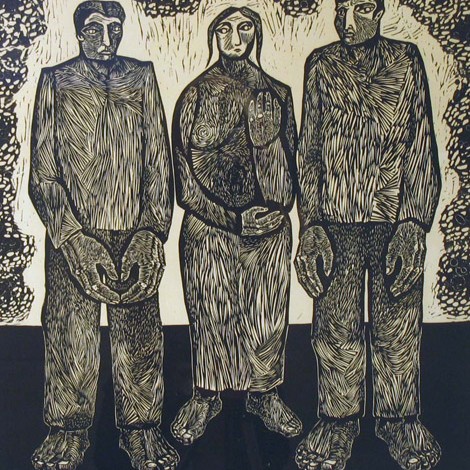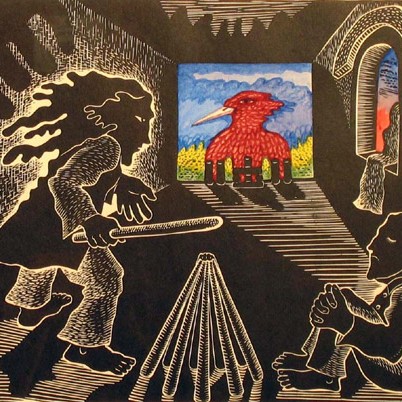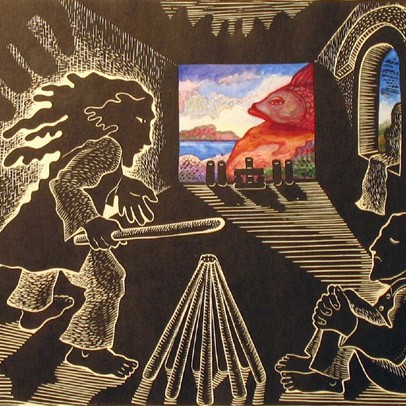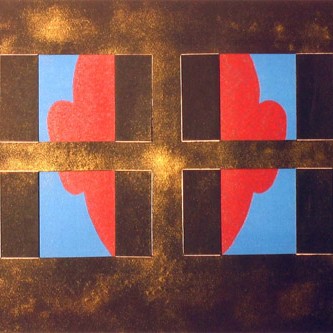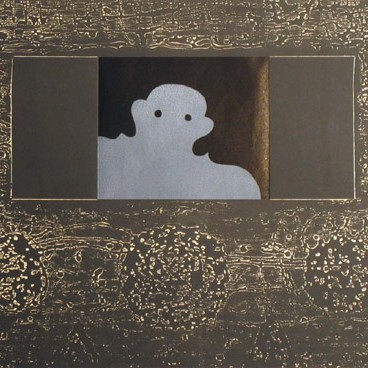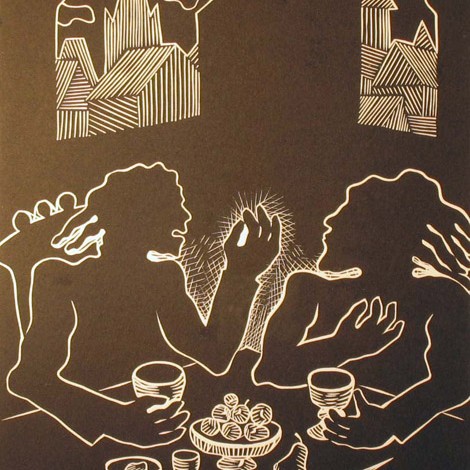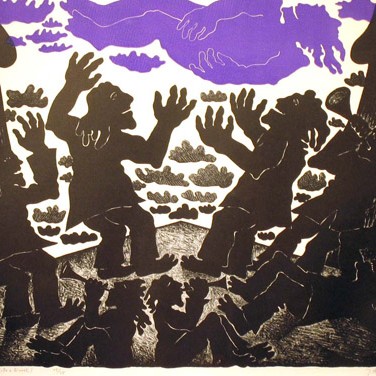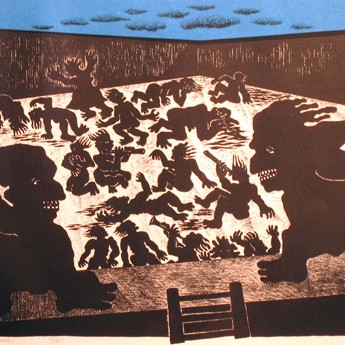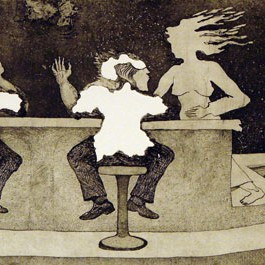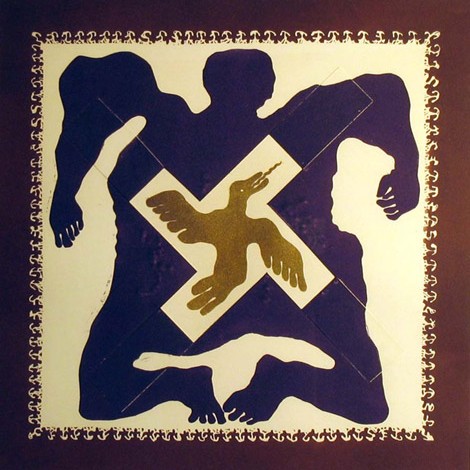The ability of Jüri Arrak to move smoothly among all possible techniques should not impair the understanding that movement only takes place between techniques – the ethical level has still remained intact. So we see also here grotesque characters, Arrak-style worlds of symbols, religious layers of meanings, calls to mental transfiguration and spiritual purification. All of it has been presented in a convinced manner – almost in a way a rapper from New York methodically repeats his message: again, again and again each day. In addition to the rapper-style, Arrak’s manner of expression also includes something of a peasant’s style, something simple and direct. Even though he uses symbols, Arrak never tries to be “sophisticated” or “artistic” – his message has been rendered directly and powerfully. Here is a strange bond between sincerity, honesty and vulnerability – because total honesty is impossible without self-purification and knowing that self-purification can never be perfect.
The 60ies were a period, when Arrak entered the local art world. He joined the grouping ANK’64, which tried to protect the anatomy of art from outer rules. Later has Arrak himself called his creation up to the beginning of the 70ies a certain “bush” – time for searches, when things born then were thrilling and not shameful, but they were still searches. Gradually Arrak approached his goal, coming out of the bush. Approximately at the beginning of the 70ies, Arrak had arrived after several switches of handwritings more or less at the point where starts the Arrak whom we know best. So also the present exhibition could be seen as a certain ethical documentation about searches and findings of one artist.
But let’s end up with yet undisclosed piece of interview with the artist, which will most probably be published in Jüri Arrak’s anniversary album.
The 60ies. Isn’t this period in your opinion over mythologised? How did it influence you?
I do not like very much the expression “the golden sixties” – there was nothing golden about them. I rather think that there exists a certain company, which likes to praise itself in the light of the sixties. There was actually nothing special, everybody did his/ her work as the way he/she could, among others also the artists. One should not exaggerate the meaning of that period. Politically the situation was under strict control, the situation was especially severe at the end of the decade – nothing golden! I also cannot say that I created anything extraordinary. I even did not dream about freedom and I cannot say that would have fought in the name of it. Yes, I did express my dissatisfaction with colour symbols and other artistic means, but most of all I was a colour dissident.
So I cannot describe the 60ies, I was a student. Later I was immensely thrilled, I worked into late nights, woke up early and continued – I really worked almost frantically. Powerful energy, I remember that.
How strong was your personal censorship?
I could not call it fear, but I certainly had some kind of personal censorship. I did not start to paint a piece, where for instance a blue man is chopping off the head of a red man. I was inexperienced with public censorship. There was one litho, Yard, corridor and roof (1972) that was removed from an exhibition. For me it was a work of the road of the mankind: the corridor was for angels, the roof being the symbol of the heavenly kongdom and the yard being the earthly symbol. The problem was not in passing of a corridor of angels, but in the fact that in the yard the sky was blue, figures black and paper white. That was enough.
.png)
